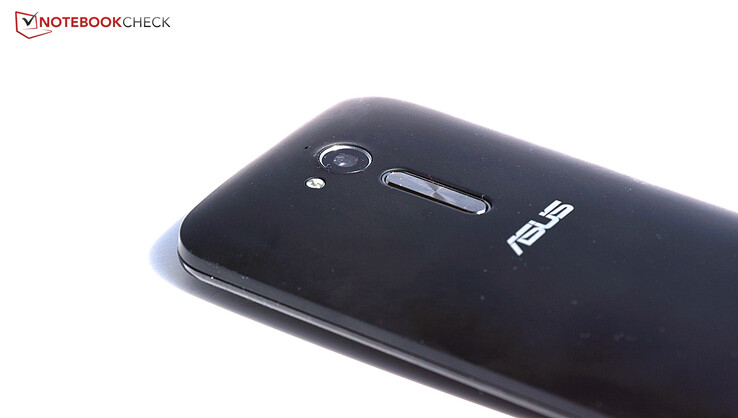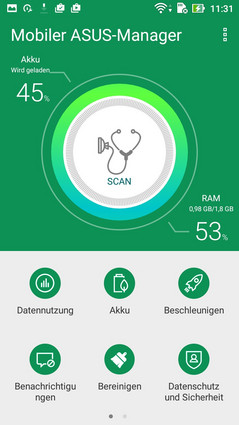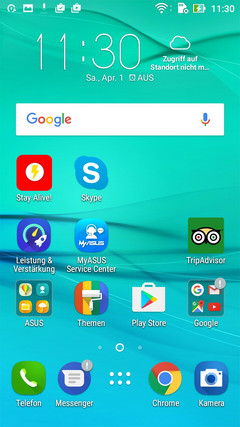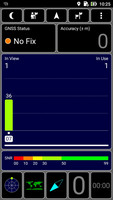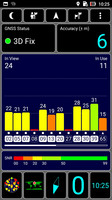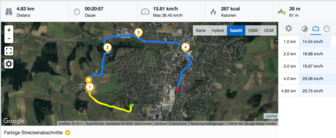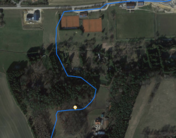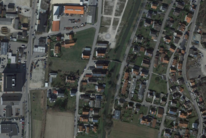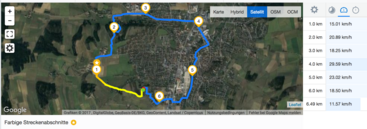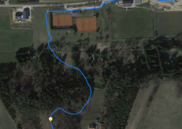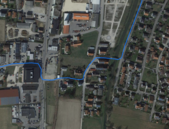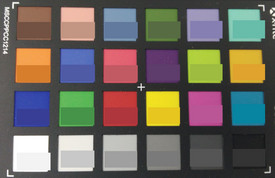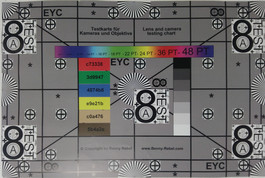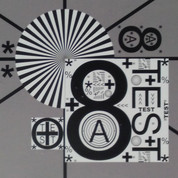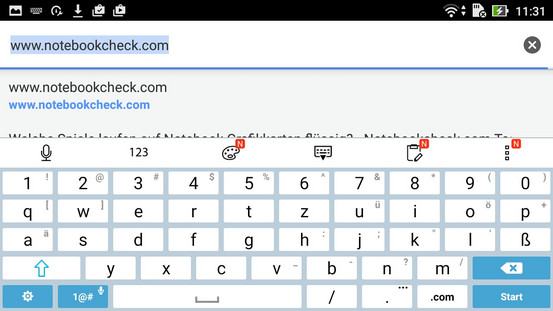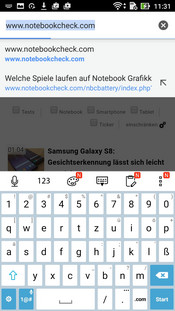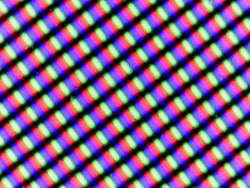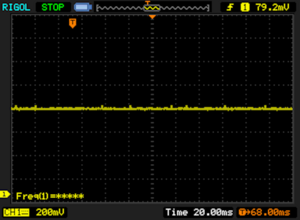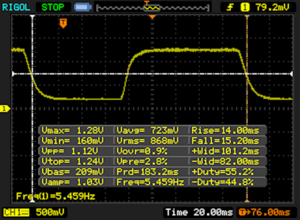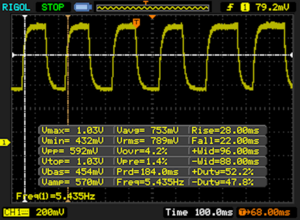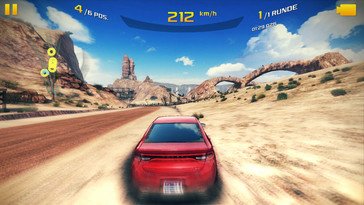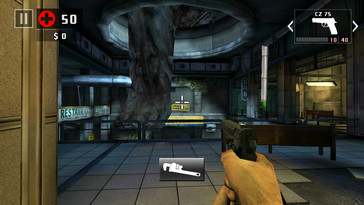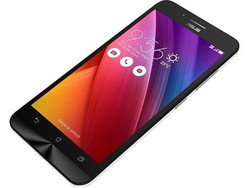Asus ZenFone Go Smartphone Review
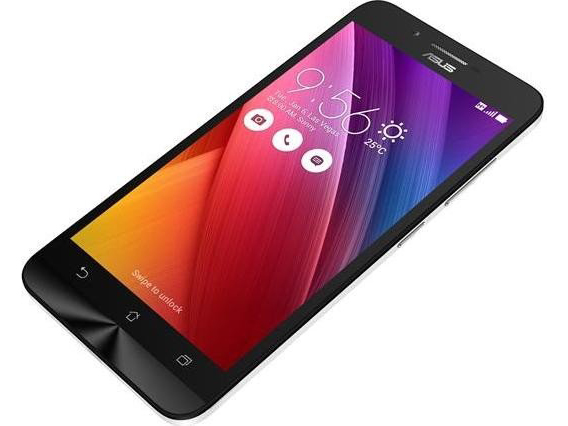
For the original German review, see here.
With a recommended price of almost 179 Euros ($190), Asus' ZenFone is an entry-level device with mid-range ambitions. Thus, it is slightly more expensive than last year's ZenFone Go, but now it has a better camera and bigger battery in return. High-end features should not be expected this year either. However, at least it comes with an HD panel, removable battery, dual SIM function, and LTE. Asus advertises its ergonomic design and various casing colors of which only black, silver, and white are currently offered in Germany.
We use LG's X Power, Wiko's U Feel, Lenovo's K6, and Huawei's P8 Lite for comparison. All devices are in a price range of 150 to 200 Euros (~$159 to ~$212).
Case
Asus' ZenFone is made entirely of plastic. A stripe with the typical design of Asus' Zen products is inserted below the menu keys: Metal looks with polished, concentric rings. The surfaces are monochrome and otherwise simple. The back is rounded toward the outer sides, which makes it comfortable to hold the ZenFone Go in the hand. The design is also rather organic and roundish rather than angular and thus the handset is pleasant to the touch. Fortunately, the back cover can be removed and the battery can be exchanged. However, both the back cover and battery are relatively difficult to remove. We even had to use a screwdriver to pry out the battery. Asus offers covers in different colors. However, they cannot be purchased individually and are only in a set of colors. Blue and red are currently not available in Central Europe. Silver with brushed aluminum looks, black and white are currently the three color versions on this market.
The clearly curved back makes the ZenFone Go significantly thicker than other smartphones from this category. However, its weight of 135 grams (~4.8 oz) also makes it very light. We quite liked the casing's stability. Pressure on the back or the screen left the smartphone just as unimpressed as our twisting attempts. The smartphone makes a very high-quality impression here. Only the back cover sometimes produced a cracking noise under pressure.
Connectivity
2 GB of working memory and 16 GB of storage are a typical configuration for this category. Smartphones, such as Wiko' U Feel or Huawei's P8 Lite (2017), come with one GB of working memory extra. A fingerprint scanner is now not unusual in this price range, but Asus' ZenFone Go does not feature this. An FM radio and USB OTG are part of the configuration though.
Software
Asus calls its proprietary user interface ZenUI. It is based on Android, and only a few and mainly visual modifications have been made to Google's Android 6.0 operating system at first glance. It was pleasing that a software update was available right after starting our tests. Thus, Asus apparently takes care of its low-cost smartphones. The Android security patches dated 1st March 2017 after the update and are thus quite up-to-date: Very good, Asus.
Asus has preloaded quite a few software on its handset. Fortunately, there is no adware apart from a hotel-rating platform app. The apps allow accessing Asus' Service Center and the Zen Community or cleaning up the smartphone.
Communication and GPS
It is quite normal that only the Wi-Fi 802.11 b/g/n standard is supported in this price range. However, it is unfortunately not normal that a smartphone should also utilize the speed reserves, which the ZenFone Go does. The review sample achieved almost twice the transmission speed as most comparison devices in our standardized Wi-Fi test a meter (~3 ft) away from the router. Very good.
LTE is now also a matter of course, but this was included for only specific countries in the predecessor. Thus, the current ZenFone Go is significantly more up-to-date. The review sample is also on par with the comparison devices with its bandwidth of 150 MBit per second (download) and 50 MBit per second (upload). However, it offers a relatively large selection with seven LTE bands, and thus it is quite possible that a fast mobile network will be found even in somewhat more exotic countries. The indoor LTE reception was good in the well-developed Vodafone network in an urban area.
| Networking | |
| iperf3 transmit AX12 | |
| Asus Zenfone Go ZB500KL | |
| Huawei P8 lite 2017 | |
| LG X Power K220 | |
| Lenovo K6 | |
| iperf3 receive AX12 | |
| Asus Zenfone Go ZB500KL | |
| Huawei P8 lite 2017 | |
| Lenovo K6 | |
| LG X Power K220 | |
The GPS module of the ZenFone Go could not locate us indoors. The reception improves when moving towards a window, and the maximum accuracy of 7 meters (~23 ft) outdoors is acceptable.
In the practical test where we take the review sample and Garmin's Edge 500 on a bike ride, the ZenFone Go unfortunately lost the signal to the satellite at 4.8 kilometers (~3 mi) of the route, and did not reconnect. The professional navigation system logged the entire route correctly. This is too bad as the review sample did quite a good job on the route through the woods. Overall, the module seems to be quite susceptible to interference and thus, the user should think twice about relying on the ZenFone Go as a navigation system.
Telephone and Call Quality
Asus has modified the phone app. The keypad opens first and the user can access contacts and frequently called numbers via the tabs in the screen's upper area. Thus, overall, the app is quite similar to that of Google's standard app and its handling is also similarly comfortable.
The call quality is satisfactory. Unfortunately, the contact’s voice sounds very thin since the earpiece does not transmit the low tones. The maximum volume is good and its sound is also quite clear. Our voices also sound somewhat thin and bass-less to our contact, but transmission is also relatively clear and quite audible when we speak more quietly. The contact sounds similar as via the earpiece when using the hands-free mode. However, we had to speak louder in order for the contact to hear us.
Cameras
Asus' ZenFone Go is also on category average in terms of cameras: 13 megapixels in the back and 5 megapixels in the front are designed to capture decent photos. The image quality of the primary camera is, in fact, good. Its sharpness is appropriate, the subjective color reproduction is good, but the photos look much darker and subdued than those of LG's G4. The quality also decreases rapidly in poor light conditions. Objects are outlined visibly and colored areas are noisy. Consequently, Asus' ZenFone Go is more suitable for sunshine photographers.
Videos can be recorded in the Full HD resolution. The illumination adapts well to new situations, but it is a little too slow for our taste. Furthermore, the focus sometimes has to be readjusted manually.
The 5-megapixel front camera shoots decent selfies, and still displays details well even in dark places. However, it has problems with bright surroundings as objects are then quickly illuminated too strongly. The subjective sharpness is acceptable, but the photos should not be scaled up too much, otherwise distortions will soon become evident.
The primary camera of Asus' ZenFone Go ZB500KL also has to show its capabilities in the lab. We analyze the color reproduction and sharpness under defined light conditions. Some colors are reproduced too brightly and also display a visible noise. The general image sharpness and the sharpness of texts on colored backgrounds are moderate. Apparently, Asus' ZenFone Go only creates really sharp photos in really ideal conditions. The sharpness decreases even more toward the photo's edges.
Accessories and Warranty
In addition to a power supply and a USB cable, Asus also includes an earphone with an acceptable sound quality. Product-specific accessories are not listed on Asus' website.
The manufacturer ships its smartphones with a 24-month warrantyFAQ: Garantie, Gewährleistung, Rückgaberecht. Please see our Guarantees, Return Policies and Warranties FAQ for country-specific information.
Input Devices and Handling
The keyboard app is called ZenUI keyboard, and is thus a component integrated into the operating system. However, it is still possible to switch to Google's standard keyboard or download another keyboard from Google's Play Store. The ZenUI keyboard features relatively big keys. Unfortunately, the user will soon notice that the ZenFone Go has problems with fast typing and the app then does not respond as quickly. Thus, it is not possible to type as quickly as on higher-performance smartphones. This lethargy is also noticed when using Google's GBoard keyboard, so it is really related to the smartphone and not the app. Asus' keyboard offers different themes that allow customizing the keypad, a clipboard for text, and an extra keypad that opens quickly. Overall, the app can be used well, although there are the speed issues that we have mentioned.
The touchscreen's surface is good and responds reliably even in the corners. The software offers many helpful settings for impaired users, a one-hand mode, and ZenMotion integrates several motions and gestures. For example, double-tapping for waking up the smartphone, drawing letters for launching specified apps or muting the smartphone by turning it around.
Three menu touch buttons are found below the screen. They function relatively reliably and are clearly lettered. The standby button's position in the smartphone's upper edge is somewhat unusual. This sometimes involves a slightly longer distance than when it is situated on the right, but on the other hand, it is not pressed accidentally here. The volume control is on the rear, which is a good position when the user has gotten used to it. All keys have a clear pressure point and are quite reliable.
Display
With a screen size of 5 inches and a resolution of 1280x720 pixels, the ZenFone Go is on par with its rivals. Only Huawei P8 lite (2017) offers a Full HD screen. The screen in the review sample has an average brightness of 452 cd/m², which is also class average. The illumination of 84% is not particularly homogeneous: The screen is 76 cd/m² darker in the upper left than lower right when holding the smartphone in landscape mode. Consequently, the brightness of large colored surfaces is noticeably uneven.
| |||||||||||||||||||||||||
Brightness Distribution: 84 %
Contrast: 1093:1 (Black: 0.42 cd/m²)
ΔE ColorChecker Calman: 4.5 | ∀{0.5-29.43 Ø4.77}
ΔE Greyscale Calman: 6.5 | ∀{0.09-98 Ø5}
96.23% sRGB (Calman 2D)
Gamma: 2.22
CCT: 7791 K
| Asus Zenfone Go ZB500KL IPS, 1280x720, 5" | LG X Power K220 IPS, 1280x720, 5.3" | Wiko U Feel IPS, 1280x720, 5" | Lenovo K6 IPS, 1920x1080, 5" | Huawei P8 lite 2017 IPS, 1920x1080, 5.2" | |
|---|---|---|---|---|---|
| Screen | -11% | 14% | 5% | 9% | |
| Brightness middle (cd/m²) | 459 | 381 -17% | 500 9% | 470 2% | 575 25% |
| Brightness (cd/m²) | 452 | 352 -22% | 485 7% | 461 2% | 559 24% |
| Brightness Distribution (%) | 84 | 85 1% | 83 -1% | 88 5% | 91 8% |
| Black Level * (cd/m²) | 0.42 | 0.2 52% | 0.22 48% | 0.38 10% | 0.39 7% |
| Contrast (:1) | 1093 | 1905 74% | 2273 108% | 1237 13% | 1474 35% |
| Colorchecker dE 2000 * | 4.5 | 7.3 -62% | 6.3 -40% | 5.2 -16% | 5.2 -16% |
| Colorchecker dE 2000 max. * | 10.6 | 21.2 -100% | 14.4 -36% | 9.5 10% | 10.3 3% |
| Greyscale dE 2000 * | 6.5 | 7.4 -14% | 5.2 20% | 5.6 14% | 7.2 -11% |
| Gamma | 2.22 99% | 2.26 97% | 2.17 101% | 2.24 98% | 2.4 92% |
| CCT | 7791 83% | 8417 77% | 7536 86% | 7924 82% | 7224 90% |
* ... smaller is better
Screen Flickering / PWM (Pulse-Width Modulation)
| Screen flickering / PWM not detected | |||
In comparison: 53 % of all tested devices do not use PWM to dim the display. If PWM was detected, an average of 8084 (minimum: 5 - maximum: 343500) Hz was measured. | |||
The black value of 0.42 cd/m² is also rather mediocre. Black looks more like a dark gray and the backlight is very visible in dark areas. However, this still results in a decent contrast of 1093:1, but the comparison devices offer more here. Colors look rather pale on the screen.
A moderate bluish tint becomes apparent in the lab tests with the spectrophotometer and CalMAN software. However, colors are reproduced quite accurately. Only the cyan and green color rates deviate too strongly. Although the panel cannot be used for exact color monitoring in the professional field, the photos look quite natural. A blue light filter with five levels, which select a warmer white balance, is also installed. This spares the eyes and still contributes to a natural image in levels 1 and 2.
Display Response Times
| ↔ Response Time Black to White | ||
|---|---|---|
| 29 ms ... rise ↗ and fall ↘ combined | ↗ 14 ms rise | |
| ↘ 15 ms fall | ||
| The screen shows relatively slow response rates in our tests and may be too slow for gamers. In comparison, all tested devices range from 0.1 (minimum) to 240 (maximum) ms. » 76 % of all devices are better. This means that the measured response time is worse than the average of all tested devices (20.2 ms). | ||
| ↔ Response Time 50% Grey to 80% Grey | ||
| 50 ms ... rise ↗ and fall ↘ combined | ↗ 28 ms rise | |
| ↘ 22 ms fall | ||
| The screen shows slow response rates in our tests and will be unsatisfactory for gamers. In comparison, all tested devices range from 0.165 (minimum) to 636 (maximum) ms. » 85 % of all devices are better. This means that the measured response time is worse than the average of all tested devices (31.6 ms). | ||
The viewing angles are good: The displayed content is still quite legible, even when looking from the side, although slight color shifts are visible. The screen's glossy surface is a problem outdoors. The screen's content is still quite legible in the shade, but the eyes have to be strained to quite some extent in order to still see something in bright surroundings.
Performance
Qualcomm's Snapdragon 410 MSM8916 is to add the performance to Asus' ZenFone Go. However the clock speed of the four cores has been limited to 1 GHz, which involves losses in the processor's power. This leads to frequent stutters and prolonged waiting times when navigating through the relatively undemanding Android OS. Installations and loading times also take a long time. The ZenFone Go is clearly inferior compared with the other devices in the comparison. Huawei's P8 lite (2017) in particular offers a considerably higher performance.
Qualcomm's Adreno 306 graphics unit is installed. Like the processor, it is also a few years old and does not support the latest graphics interfaces in the mobile sector. The performance in the lower mid-range is now also much higher as a glance at the benchmarks proves.
| AnTuTu v6 - Total Score (sort by value) | |
| Asus Zenfone Go ZB500KL | |
| LG X Power K220 | |
| Wiko U Feel | |
| Lenovo K6 | |
| Huawei P8 lite 2017 | |
| Geekbench 4.0 | |
| 64 Bit Single-Core Score (sort by value) | |
| Asus Zenfone Go ZB500KL | |
| LG X Power K220 | |
| Lenovo K6 | |
| Huawei P8 lite 2017 | |
| 64 Bit Multi-Core Score (sort by value) | |
| Asus Zenfone Go ZB500KL | |
| LG X Power K220 | |
| Lenovo K6 | |
| Huawei P8 lite 2017 | |
| 3DMark | |
| 1280x720 offscreen Ice Storm Unlimited Score (sort by value) | |
| Asus Zenfone Go ZB500KL | |
| LG X Power K220 | |
| Wiko U Feel | |
| Lenovo K6 | |
| Huawei P8 lite 2017 | |
| 1280x720 offscreen Ice Storm Unlimited Graphics Score (sort by value) | |
| Asus Zenfone Go ZB500KL | |
| LG X Power K220 | |
| Wiko U Feel | |
| Lenovo K6 | |
| Huawei P8 lite 2017 | |
| 1280x720 offscreen Ice Storm Unlimited Physics (sort by value) | |
| Asus Zenfone Go ZB500KL | |
| LG X Power K220 | |
| Wiko U Feel | |
| Lenovo K6 | |
| Huawei P8 lite 2017 | |
| 2560x1440 Sling Shot OpenGL ES 3.0 (sort by value) | |
| Asus Zenfone Go ZB500KL | |
| LG X Power K220 | |
| Wiko U Feel | |
| Lenovo K6 | |
| Huawei P8 lite 2017 | |
| 2560x1440 Sling Shot OpenGL ES 3.0 Graphics (sort by value) | |
| Asus Zenfone Go ZB500KL | |
| LG X Power K220 | |
| Wiko U Feel | |
| Lenovo K6 | |
| Huawei P8 lite 2017 | |
| 2560x1440 Sling Shot OpenGL ES 3.0 Physics (sort by value) | |
| Asus Zenfone Go ZB500KL | |
| LG X Power K220 | |
| Wiko U Feel | |
| Lenovo K6 | |
| Huawei P8 lite 2017 | |
| GFXBench (DX / GLBenchmark) 2.7 | |
| T-Rex Onscreen (sort by value) | |
| Asus Zenfone Go ZB500KL | |
| LG X Power K220 | |
| Wiko U Feel | |
| Lenovo K6 | |
| Huawei P8 lite 2017 | |
| 1920x1080 T-Rex Offscreen (sort by value) | |
| Asus Zenfone Go ZB500KL | |
| LG X Power K220 | |
| Wiko U Feel | |
| Lenovo K6 | |
| Huawei P8 lite 2017 | |
| GFXBench 3.0 | |
| on screen Manhattan Onscreen OGL (sort by value) | |
| Asus Zenfone Go ZB500KL | |
| LG X Power K220 | |
| Wiko U Feel | |
| Lenovo K6 | |
| Huawei P8 lite 2017 | |
| 1920x1080 1080p Manhattan Offscreen (sort by value) | |
| Asus Zenfone Go ZB500KL | |
| LG X Power K220 | |
| Wiko U Feel | |
| Lenovo K6 | |
| Huawei P8 lite 2017 | |
| PCMark for Android - Work performance score (sort by value) | |
| Asus Zenfone Go ZB500KL | |
| LG X Power K220 | |
| Wiko U Feel | |
| Lenovo K6 | |
| Huawei P8 lite 2017 | |
Asus' ZenFone Go is also considerably slower than the comparison devices when browsing the Internet. Sometimes, prolonged waiting times occur. Just entering a URL takes longer because the keyboard app has to load first. Although sophisticated HTML5 pages need longer to open, they usually run smoothly.
| Octane V2 - Total Score (sort by value) | |
| Asus Zenfone Go ZB500KL | |
| LG X Power K220 | |
| Wiko U Feel | |
| Lenovo K6 | |
| Huawei P8 lite 2017 | |
| JetStream 1.1 - Total Score (sort by value) | |
| Asus Zenfone Go ZB500KL | |
| LG X Power K220 | |
| Wiko U Feel | |
| Lenovo K6 | |
| Huawei P8 lite 2017 | |
| Mozilla Kraken 1.1 - Total (sort by value) | |
| Asus Zenfone Go ZB500KL | |
| LG X Power K220 | |
| Wiko U Feel | |
| Lenovo K6 | |
| Huawei P8 lite 2017 | |
* ... smaller is better
We examine how fast Asus' ZenFone Go can access both the internal storage and a Toshiba Exceria Pro M40 microSD. Accessing the microSD is relatively slow, and ZenFone Go clearly takes the last place. The ZenFone Go also usually needs longer than the comparison devices to access the internal storage. Only its sequential write speed is roughly on par with the comparison devices. These slow access speeds could also be another reason for the very long loading times for apps and the occasional stutters.
| AndroBench 3-5 | |
| Sequential Read 256KB (sort by value) | |
| Asus Zenfone Go ZB500KL | |
| LG X Power K220 | |
| Wiko U Feel | |
| Lenovo K6 | |
| Huawei P8 lite 2017 | |
| Sequential Write 256KB (sort by value) | |
| Asus Zenfone Go ZB500KL | |
| LG X Power K220 | |
| Wiko U Feel | |
| Lenovo K6 | |
| Huawei P8 lite 2017 | |
| Random Read 4KB (sort by value) | |
| Asus Zenfone Go ZB500KL | |
| LG X Power K220 | |
| Wiko U Feel | |
| Lenovo K6 | |
| Huawei P8 lite 2017 | |
| Random Write 4KB (sort by value) | |
| Asus Zenfone Go ZB500KL | |
| LG X Power K220 | |
| Wiko U Feel | |
| Lenovo K6 | |
| Huawei P8 lite 2017 | |
| Sequential Read 256KB SDCard (sort by value) | |
| Asus Zenfone Go ZB500KL | |
| LG X Power K220 | |
| Wiko U Feel | |
| Lenovo K6 | |
| Huawei P8 lite 2017 | |
| Sequential Write 256KB SDCard (sort by value) | |
| Asus Zenfone Go ZB500KL | |
| LG X Power K220 | |
| Wiko U Feel | |
| Lenovo K6 | |
| Huawei P8 lite 2017 | |
Games
We also tested some games on Asus' ZenFone Go for checking the smartphone's performance here. Mobile games are generally programmed to run on as many smartphones as possible. However, some games provide graphics settings to adapt the game to the smartphone's performance capacity, for example "Asphalt 8" that we tested. Unfortunately, this is essential for Asus' ZenFone Go. It only achieves an average of 14 frames per second in the highest settings in "Asphalt 8", making it unplayable. Smooth 30 frames are achieved in the lowest settings here and in the zombie shooter "Dead Trigger 2". Basic games, such as "Angry Birds" also run lag-free. However, the user is not really well-equipped for the future due to the graphics card's lack of support for modern APIs.
Another point that has to be accepted: The loading times are extremely long, and installing games also take eternities. However, controlling games via touchscreen and position sensor is very reliable.
Emissions
Temperature
Asus' ZenFone Go does not get exceptionally warm, even when using it in full load for a prolonged time. Nevertheless, 38 °C (~100 °F) is noticeable. The temperature increase is felt over the entire casing during load, but the handset is a few degrees cooler on the back. We measure a maximum of 34.2 °C (~94 °F) in idle mode also on the front.
The performance remains stable during prolonged full load as we ascertained with the GFXBench battery test.
(+) The maximum temperature on the upper side is 38 °C / 100 F, compared to the average of 35.2 °C / 95 F, ranging from 21.9 to 247 °C for the class Smartphone.
(+) The bottom heats up to a maximum of 35.3 °C / 96 F, compared to the average of 34 °C / 93 F
(+) In idle usage, the average temperature for the upper side is 31.5 °C / 89 F, compared to the device average of 32.9 °C / 91 F.
Speaker
The small speaker on the lower edge is not particularly loud at a maximum of 78.4 dB(A). Basses are almost completely absent, but the mids are quite audible which is very helpful when listening to songs or voices. The high tones are a bit too emphasized in our opinion and sometimes clang. Music fans will hardly be happy with the speaker in the long run, but it is sufficient for music sampling or a short video.
Playback via Bluetooth and the 3.5-mm audio jack is good and without fault.
Asus Zenfone Go ZB500KL audio analysis
(±) | speaker loudness is average but good (78.4 dB)
Bass 100 - 315 Hz
(-) | nearly no bass - on average 28.6% lower than median
(±) | linearity of bass is average (10.2% delta to prev. frequency)
Mids 400 - 2000 Hz
(+) | balanced mids - only 4.8% away from median
(+) | mids are linear (6.1% delta to prev. frequency)
Highs 2 - 16 kHz
(+) | balanced highs - only 3.1% away from median
(+) | highs are linear (4.5% delta to prev. frequency)
Overall 100 - 16.000 Hz
(±) | linearity of overall sound is average (25.8% difference to median)
Compared to same class
» 64% of all tested devices in this class were better, 6% similar, 29% worse
» The best had a delta of 11%, average was 35%, worst was 134%
Compared to all devices tested
» 79% of all tested devices were better, 4% similar, 17% worse
» The best had a delta of 4%, average was 24%, worst was 134%
Huawei P8 lite 2017 audio analysis
(+) | speakers can play relatively loud (83.6 dB)
Bass 100 - 315 Hz
(-) | nearly no bass - on average 32.1% lower than median
(±) | linearity of bass is average (11.2% delta to prev. frequency)
Mids 400 - 2000 Hz
(+) | balanced mids - only 4% away from median
(+) | mids are linear (6.4% delta to prev. frequency)
Highs 2 - 16 kHz
(±) | higher highs - on average 7.9% higher than median
(+) | highs are linear (4.8% delta to prev. frequency)
Overall 100 - 16.000 Hz
(±) | linearity of overall sound is average (27.6% difference to median)
Compared to same class
» 72% of all tested devices in this class were better, 5% similar, 24% worse
» The best had a delta of 11%, average was 35%, worst was 134%
Compared to all devices tested
» 84% of all tested devices were better, 3% similar, 13% worse
» The best had a delta of 4%, average was 24%, worst was 134%
Frequency diagram comparison (checkboxes above can be turned on/off!)
Energy Management
Power Consumption
The ZenFone Go already consumes quite a lot of power when turned off and in standby. We noticed this in the test because the battery was depleted within a few days despite standby mode. The ZenFone Go is not a savings marvel in idle mode either. However, this is not surprising in view of the old SoC. Then again, the load consumption is acceptable and is relatively low with a maximum of 4.22 watts.
| Off / Standby | |
| Idle | |
| Load |
|
Key:
min: | |
| Asus Zenfone Go ZB500KL 2600 mAh | LG X Power K220 4100 mAh | Wiko U Feel 2500 mAh | Lenovo K6 3000 mAh | Huawei P8 lite 2017 3000 mAh | |
|---|---|---|---|---|---|
| Power Consumption | 10% | -22% | 2% | -43% | |
| Idle Minimum * (Watt) | 0.92 | 0.64 30% | 0.82 11% | 0.65 29% | 1.44 -57% |
| Idle Average * (Watt) | 1.76 | 1.3 26% | 1.61 9% | 1.65 6% | 2.47 -40% |
| Idle Maximum * (Watt) | 1.85 | 1.34 28% | 1.8 3% | 1.67 10% | 2.58 -39% |
| Load Average * (Watt) | 3.47 | 4.18 -20% | 5.99 -73% | 3.58 -3% | 4.55 -31% |
| Load Maximum * (Watt) | 4.22 | 4.87 -15% | 6.7 -59% | 5.58 -32% | 6.3 -49% |
* ... smaller is better
Battery Runtime
In view of the relatively small battery with a capacity of 2600 mAh or 10.1 watt hours, 9:32 hours in the Wi-Fi test are satisfactory. Furthermore, the battery is removable so that a replacement battery for increasing the runtime can be taken along on long trips. All comparison devices have non-removable batteries. LG's X Power achieves twice the runtime thanks to its very high-capacity battery.
The ZenFone Go does not feature a quick charge function and thus needs up to 3 hours for recharging.
| Asus Zenfone Go ZB500KL 2600 mAh | LG X Power K220 4100 mAh | Wiko U Feel 2500 mAh | Lenovo K6 3000 mAh | Huawei P8 lite 2017 3000 mAh | |
|---|---|---|---|---|---|
| Battery runtime | 54% | -3% | 22% | 5% | |
| Reader / Idle (h) | 20.4 | 27.1 33% | 22.1 8% | ||
| H.264 (h) | 10.3 | 10.6 3% | 10.7 4% | ||
| WiFi v1.3 (h) | 9.5 | 16.5 74% | 9.2 -3% | 11.9 25% | 10.1 6% |
| Load (h) | 4.6 | 6.1 33% | 5.8 26% | 4.7 2% |
Pros
Cons
Verdict
With the ZenFone Go, Asus delivers a smartphone that stands firmly at the lower end of the mid-range. The solid casing, removable battery, and camera's decent photos in good light conditions speak for the handset. However, the buyer has to accept the relatively low performance that it presents when navigating through the menu. Furthermore, the GPS module has dropouts and the screen only achieves an average contrast and has an uneven illumination.
In our opinion, it is pleasing that Asus provides its handset with Google's latest security patches via updates. However, an update to the latest operating system should not be expected in this price range. The screen's relatively expansive color accuracy and the good handling are also positives.
The ZenFone Go offers positive aspects, such as the removable battery and solid casing. However, Asus could have given it a bit more power.
Overall, we can recommend the ZenFone Go to users who do not depend on high performance. However, the buyer should be aware that some impressive models from the competition exist, such as Huawei's P8 lite (2017) or Lenovo's K6, for the same or just a slightly higher price.
Asus Zenfone Go ZB500KL
- 04/03/2017 v6 (old)
Florian Wimmer




